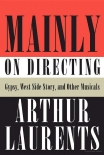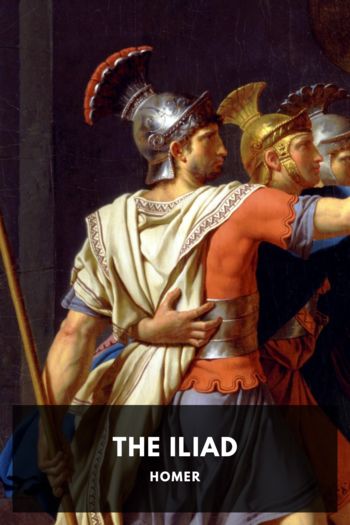Mainly on Directing, Arthur Laurents [best books for students to read TXT] 📗

- Author: Arthur Laurents
Book online «Mainly on Directing, Arthur Laurents [best books for students to read TXT] 📗». Author Arthur Laurents
“Significant” additionally because this was not the premiere of a new, innovative work that might change the course of musical-theatre history; this was the closing night of the fourth New York revival of a show half a century old. Nothing new on paper—but there must have been something new somewhere. Not a new star, because even with bigger and brighter stars, there had not been a response remotely close to this on the closing, or for that matter opening, night of the original or of any of the other revivals.
Why that extraordinary response to this particular production? What process made the production itself extraordinary?
I had directed Gypsy twice before, and while each production was inevitably as different as the Rose played by two very different stars, and each was a still remembered success, I had no interest in repeating either Angela's deeply probing yet deftly comedic performance of a Rose in conflict with herself or Tyne's earthy, brassily comic performance of a driven, sexual Rose or a variation of either. Losing Tom had changed my priorities: the theatre didn't matter as it once had. If I was going to participate in life, it could only be in theatre; but without him, it could only be theatre that really excited me—certainly not a revival that was just another revival. Because it was for him, this Gypsy had to be a Gypsy completely unlike any that had ever been seen, and not only because Patti LuPone being Patti LuPone would be a Rose unlike any other anyway. It would be an Event; Patti would take the town by storm, and the production would wake up the New York theatre as Tom wanted and predicted.
That was the goal: an Event. How I would make this fourth revival of Gypsy—I didn't really think “fourth,” I wasn't counting—how I would make it an Event, I had an inkling, but not a doubt that I would until City Center's Ninth Floor made execution of that idea, or any idea, unlikely.
Example: their schedule for technical rehearsals was a candidate for senselessness. Of the five days they offered, the first day was without a crew, which made rehearsal pointless; the third day was the Fourth of July, a holiday at the Center, which meant no rehearsal, because no one worked; and the fifth and last day was reserved for a special run-through for their board (of investors), sitting in the mezzanine because photographers would be in the orchestra taking production shots of a production that didn't exist.
The schedule for technical rehearsals should be made by the production stage manager and the director, who have worked with the scenic designer and know all the various artistic needs of the production. They then submit their schedule to the producer(s) and general manager for comment. City Center's Ninth Floor wasn't the first and won't be the last of the current breed of producers to reverse the order. Their concern is money, not quality, and even before that, control. Control of exactly what, they aren't sure, but if they have it, they can decide what is worth being in control of.
Craig Jacobs came up with a workable schedule that was ultimately accepted after a battle that was disgusting even for the Ninth Floor. It had a positive effect, though. It forced me to face that if Gypsy was going to be the Event I envisioned, I had to ignore the producers and, with Craig's help, do as I wanted. Actually, what could they do? They were promoting the show, they were selling the show, they needed the show.
There's always something that can be done by any side. What they could do, they did. As warned, they nickeled-and-dimed the budget for scenery and costumes. There are two ways to deal with that: quit, or take it as a challenge to let imagination and inventiveness supplant money. A big Broadway musical costs far too much these days, anyway: there's too much reliance on too much scenery and too many unnecessary costumes and too little courage to push the audience to use its imagination by directors and creators using theirs—and too much acceptance by producers and general managers that this costs that much. “Why?” you ask. “Because it just does,” they answer. Well, examine it; question it; often, it doesn't.
I began with the costumes. To suit the limited budget, my idea was for the show to be the world as seen through Rose's eyes. In the first act, the only costumes that would register would be for Rose and June—Baby and Dainty—and Louise. For the vaudeville acts, the kids, big and little, would be costumed as little as Rose could get away with on her “Eighty-eight bucks.” For the character women, a generic dress with an accessory for the occasion—cloche hats for the mothers at Uncle Jocko's Kiddie Show, a coolie hat for the Chinese waitress in the resturant, collar and cuffs for Miss Cratchitt in Grantziger's office. Similarly, for the character men: shirts and pants, with a plaid tam for Uncle Jocko, a cap for Georgie, suspenders for Pop in the kitchen, a suit and tie for Weber backstage at the vaudeville house.
As the play and Rose moved along, more costumes would appear. When June left, Louise's costumes would be stepped up to stand up to Rose. In the burlesque house, more characters in more costumes, until by the end of Louise's strip, the company would finally be in full costume for a full production number in a Broadway show.
The costume designer I chose was Martin Pakledinaz. We had met more than twenty years ago when he was assisting Theoni Aldredge on the surpassingly brilliant Cage aux Folles costumes. We had been glad to run into each other occasionally over the years, usually through Theoni, but Marty had come into his own with fireworks. Working together





Comments (0)